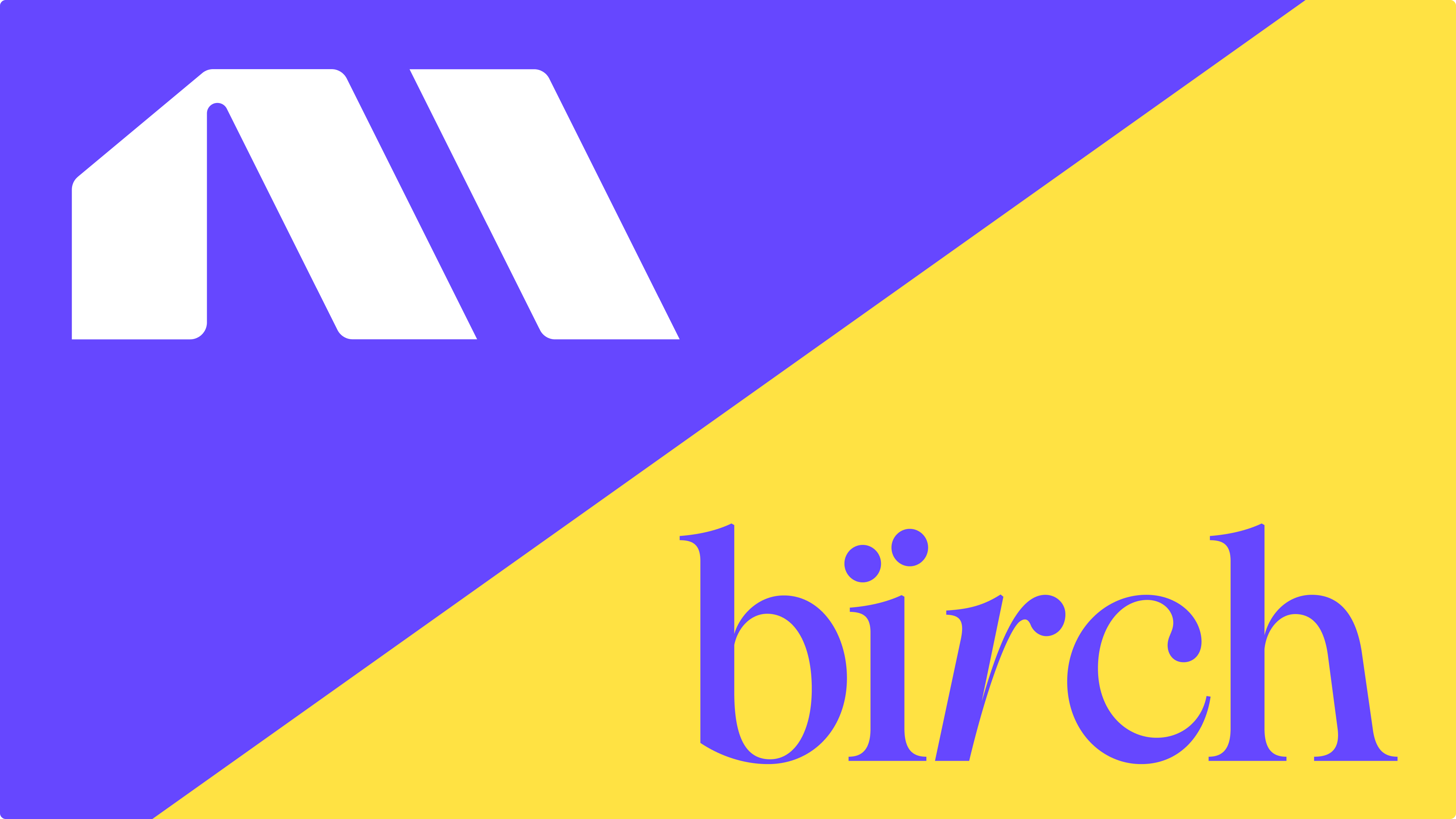Mobile app marketing has changed fast. If you’ve been in the space for a few years, you’ve probably felt it: Apple’s App Tracking Transparency (ATT) has shaken up attribution, creatives have become crowded and struggle to stand out, and AI has sped up how we manage campaigns. Today, it’s less about hyper-targeting and more about nailing your creative and product–market fit.

We spoke with Anton Kuzmin, Head of User Acquisition at AdQuantum, a performance-driven marketing agency, to uncover what’s working now and where mobile app marketing is headed. The team has been scaling subscription apps, mobile games, and AI-powered tools across global markets for a decade. They shared deep mobile app marketing insights on campaign strategies, creative testing frameworks, and user acquisition shifts shaping the space.
Key takeaways
- Due to platform automation and privacy rules, mobile app marketing prioritizes creative quality over micro-targeting.
- Lifecycle-based strategies (launch, growth, maturity) are essential for sustainable results.
- Creative testing is the #1 growth lever—emotional, story-driven formats often outperform polished brand ads.
- Attribution remains complex; agencies blend SKAdNetwork data, modeled insights, and in-app metrics to evaluate success.
- AI enhances efficiency but doesn’t replace human creativity. The best results come from merging tech and storytelling for impact.
Mobile vs web marketing: Is one better than the other?

AdQuantum’s roots run deep in mobile marketing. Anton recalls how the agency first built its reputation working with subscription and gaming apps—sectors shaped by unique user behaviors and platform-specific challenges.
Today, AdQuantum combines mobile and web strategies fluidly. They often leverage hybrid approaches, like web-to-app and web-to-web funnels, to maximize acquisition and user lifetime value. Their portfolio spans subscription-based fitness and lifestyle apps, fintech apps, AI-powered tools, and a variety of mobile games, demonstrating adaptability across platforms.
In AdQuantum’s experience, this is what sets mobile and web marketing apart:
- User behavior: Mobile users expect their journey to be fast and smooth. They want to hop between apps and screens in moments.
- Attribution complexity: Unlike web, mobile attribution is a puzzle. Privacy rules and “walled gardens” make accurate measurement tricky.
- Growth opportunities: Mobile apps benefit from app stores, push notifications, and native device features that are unavailable on the web.
Mobile marketing isn’t just web marketing on a smaller screen. It has a unique ecosystem and user behavior. Anton tells brands trying to decide between the two: “Mobile offers a broader reach and deeper engagement potential, but unlocking that requires specialized skills and approaches.”
Building a winning app marketing strategy: aligning strategy with the app lifecycle
Campaigns at AdQuantum come alive through tight collaboration. Performance buyers, creative leads, AI managers, and project managers engage in continuous feedback loops driven by real-time data.
AdQuantum’s campaign process unfolds in ideation, prototyping, and testing. Anton explains, “Success rarely hinges on one viral ad. It’s a structured, repeatable process that discovers—and scales—what works best.” Let’s take a look at how they do it.
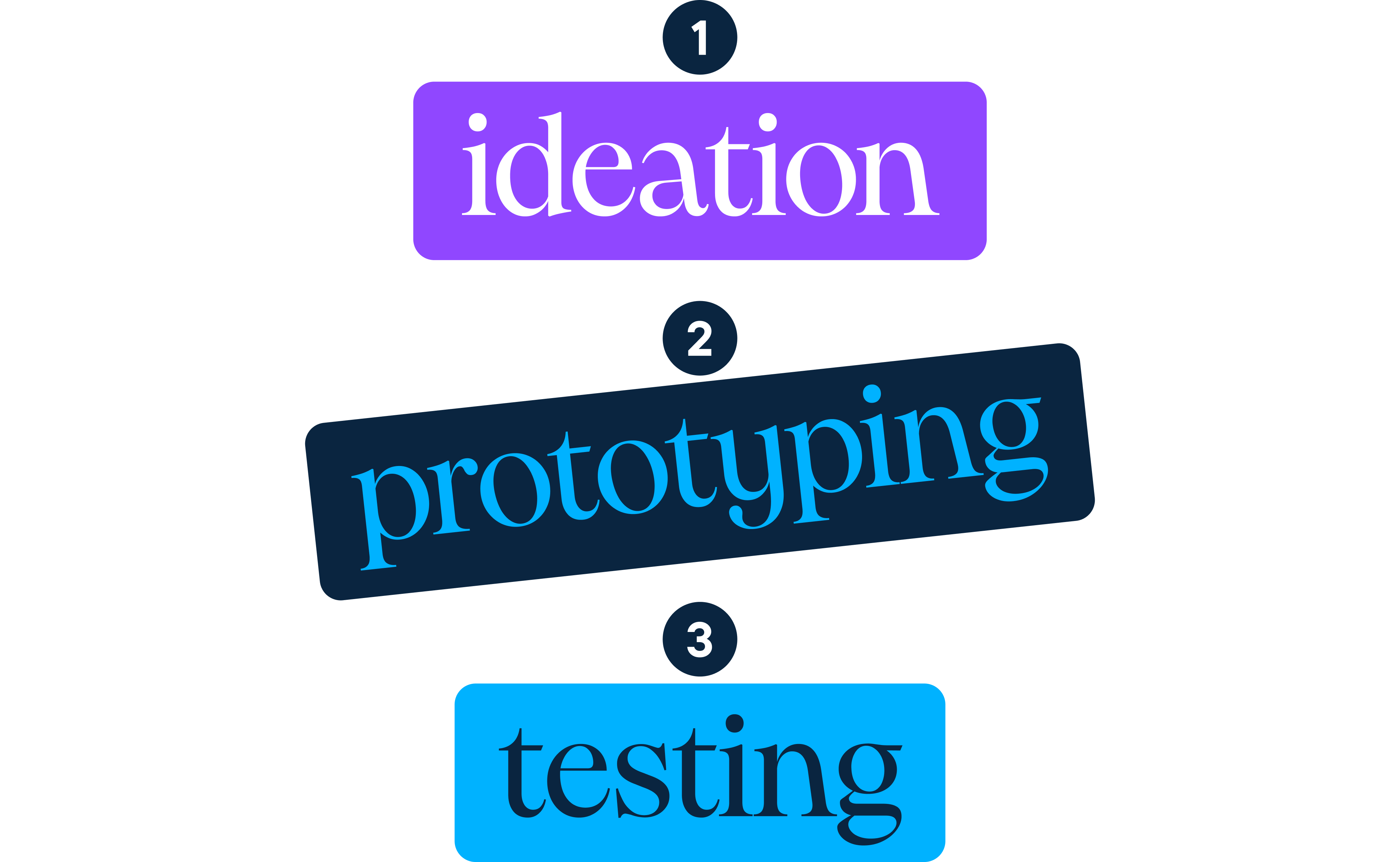
However, what truly sets AdQuantum apart is how closely they align their strategies to each app’s lifecycle stage. This targeted approach drives efficiency and sustained growth. Here’s how they break it down:
1. Early stage: ideation & creative development
The focus is on validating the product–market fit. AdQuantum runs baseline CPI tests with broad targeting to confirm the app resonates with users. Quick creative iterations help pinpoint which messages connect best.
Who’s involved?
- Creative leads, campaign strategists, creative managers, and AI managers collaborate to generate fresh ad concepts.
What do they do?
- They analyze industry trends, competitor moves, and user insights to brainstorm hypotheses.
Tools:
- “Spy tools” like Ad Library help the team monitor competitor creatives.
- Tools like Midjourney come into play when they need a more tailored or unique creative approach.
- Perplexity and ChatGPT streamline idea generation for research and brainstorming.
2. Growth phase: prototyping & production
The priority now shifts to scaling and retention. This means increasing creative volume, leveraging automated bidding, and optimizing onboarding flows to keep users engaged beyond installation.
Who’s involved?
- Creative teams (including motion designers and art directors) work closely with AI specialists to produce video and static ad assets efficiently.
What do they do?
- Brainstorm ad concepts using trend research and past results, rapidly prototyping and refining ideas with help from AI specialists.
- Produce video, motion, and static formats for each channel and iterate quickly based on feedback.
- Launch the best assets for live testing, keeping the creative pipeline fresh to maximize results.
Tools:
- Symphony, CapCut, and other custom solutions for generating ad creatives, especially for platforms like TikTok.
3. Maturity: testing & optimization
Profitability and lifetime value (LTV) are key here. The team fine-tunes audience segmentation and remarketing efforts and nurtures long-term user cohorts to maximize ROI.
Who’s involved?
- Performance buyers, media buyers, data analysts, and campaign managers lead this phase.
What do they do?
- Launch multiple ad variants, conduct A/B tests to evaluate performance, identify winning creatives rapidly, and monitor essential KPIs like installs per mille (IPM), cost per install (CPI), retention, and lifetime value (LTV).
Tools:
- Mobile measurement partners (MMPs) such as Adjust and Appsflyer track attribution and user events.
- Bïrch to handle campaign scaling, bidding strategies, and creative rotations.
Anton tells us that, in practical campaign execution, the team adopts broad targeting and automated bidding to let algorithms optimize delivery. “Manual settings are fading away,” he says. “Platforms encourage the use of ‘advantage placements’ or other automated modes. Creative variety, volume, and quality remain the key levers on the buying side.”
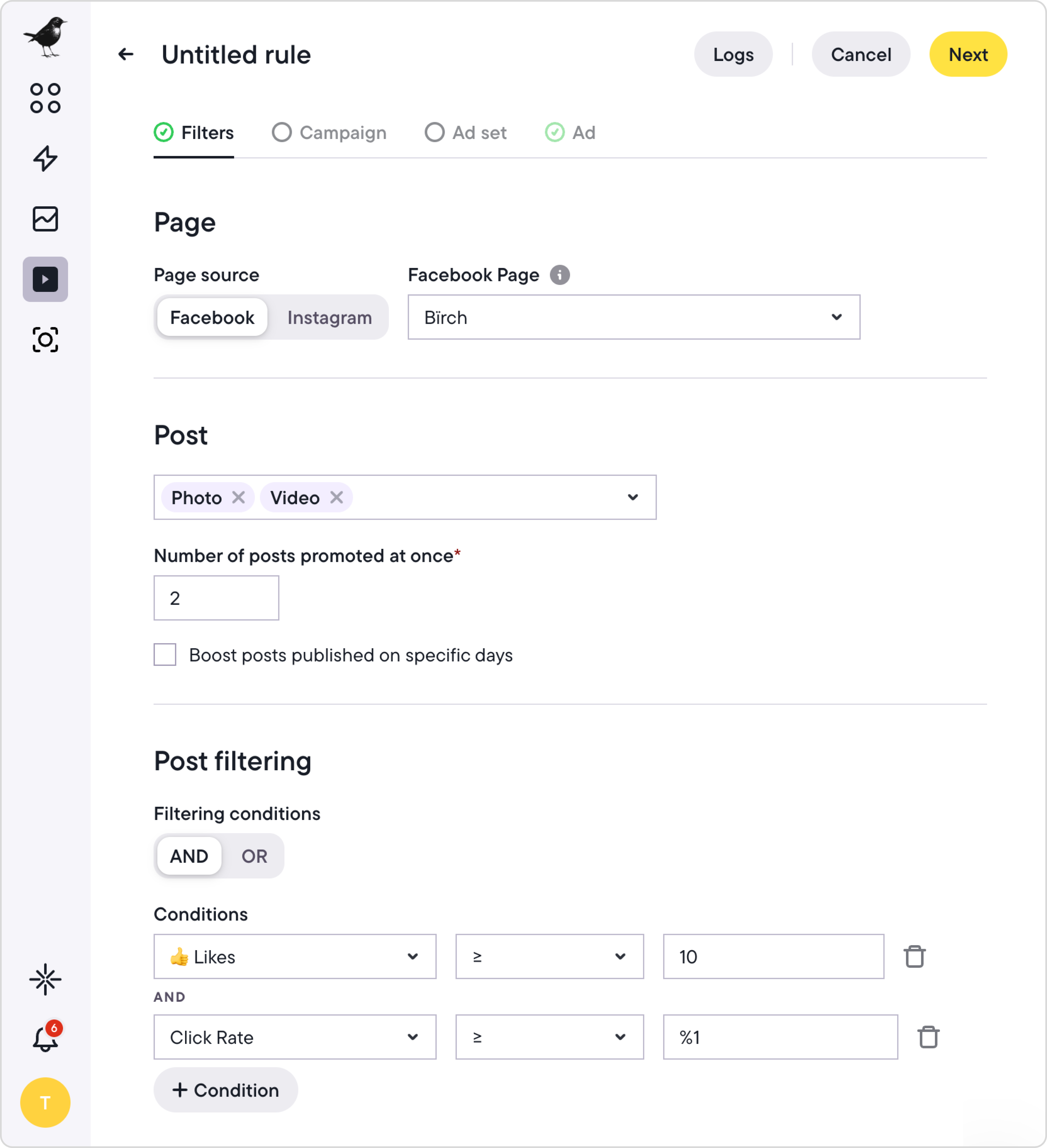
Anton recounted a notable example of building a campaign from the ground up for a Health & Fitness client:
"We developed a user acquisition strategy from scratch for a web-to-web campaign. The biggest challenge was finding the proper audience and refining the funnel. We relied heavily on extensive A/B testing and used quizzes to engage users. Through patience and continuous testing, we managed to cut the CPA in half within two months, turning the campaign into a predictable, profitable machine."
This case reinforces AdQuantum’s emphasis on process over quick wins. Meticulous testing and funnel optimization can unlock growth even when starting without prior data.
By blending automation with high creative output, they avoid a one-size-fits-all tactic. Every lifecycle stage calls for unique KPIs and creative strategies, keeping campaigns agile, scalable, and performance-driven from launch to maturity.
Learning from early-stage app mistakes
Launching a new mobile app excites teams, but—as Anton points out—many fall into familiar traps that stall growth and drain resources. But early missteps don’t need to happen. Teams can follow a smarter, more effective path.
One of the biggest challenges early-stage apps face is underfunded budgets. Anton explains that testing with less than $10,000 rarely uncovers the comprehensive insights needed to understand how an app fits the market and channels.
He recommends starting with at least $40,000 to $50,000 to test 20 plus creative assets meaningfully. Investing this much allows teams to gather reliable data on what resonates instead of jumping to conclusions from incomplete or inconclusive results.
Another common pitfall involves rushing into paid user acquisition without validating product–market fit. Investing heavily in acquisition before ensuring the app truly meets users’ needs only leads to high churn and wasted spend. Anton urges teams to perfect the app first—making sure it solves a real problem and delivers genuine value—before scaling marketing efforts. “Marketing alone can’t save a subpar product,” he emphasizes.
On the creative front, AdQuantum shares eye-opening insights. Anton reveals that breakthrough creatives win in less than 1% of cases. This forces marketers to produce thousands of creative variations to find those rare pieces that truly move the needle.
He stresses the value of relentless iteration and volume:
Resisting iteration or clinging to early concepts also proves costly. Teams can optimize results when they let data drive decisions and remain flexible. As Anton puts it, holding onto failing ideas only wastes budget and slows growth.
Creative testing: What’s winning right now?

Creative remains the biggest growth lever in mobile app marketing—and the most unpredictable. Teams that excel at ideating, testing, and scaling high-performing ads consistently outpace their competition—but not without embracing constant challenges, experimentation, and a healthy dose of humility.
How AdQuantum ideates, tests, and scales winning creatives
User expectations and platform algorithms shift constantly, creative fatigue sets in quickly, and what resonated last quarter can flop in the next. “Sometimes, even exhaustive rounds of testing yield nothing for months—then, suddenly, with enough volume and a bit of luck, you find your winner,” Anton says.
AdQuantum approaches creatives as process-driven experiments:
- Intensive product understanding: The team digs deep into the app, its core value, and real user motivations before generating creative ideas.
- Collaborative brainstorming: Creative and buying teams collectively brainstorm 10–20 hypotheses for each new campaign.
- Trend monitoring: They constantly track successful creatives from other verticals using spy tools (like Ad Library), remixing formats and hooks from fintech, fitness, gaming, and beyond.
- Rapid prototyping and launch: Ideas are quickly rendered into multiple formats, from video to static and interactive, then released to gather real-world data.
- Continuous testing: They produce and test dozens—even hundreds—of creative variations at a time, only scaling those that deliver above-benchmark results.
“The feedback loop is everything. We monitor early signals closely, iterate quickly, and aren’t afraid to kill underperformers fast. It’s all about maximizing learning velocity.”
Balancing performance with authenticity
The most successful ads walk a fine line between performance and authenticity. On one hand, creatives need to drive immediate installs and engagement. On the other hand, modern users tune out anything that feels “salesy” or inauthentic.
“Our team finds that storytelling, using real user language, and leaning into emotional truths deliver better results than generic performance slogans,” says Anton. “The first three seconds are everything. If you don’t spark an emotional response right away—surprise, amusement, recognition—users scroll past.”
Sometimes, the most significant breakthroughs come unexpectedly.
Platform choices: Anton’s perspective
Anton knows the key to choosing ad platforms is matching the right audience with the right creative. He leans on the data but also makes sure ads feel at home on each platform. TikTok is perfect for quick, creative experiments and fast reach, while YouTube shines when you want to tell a longer story or retarget viewers.
The team starts by figuring out where people hang out and how they use each app. Then, they let the numbers show which ads hit or miss. Authentic, native-feeling content excels on TikTok, but polished videos still have their moment when it comes to building trust.
There’s no silver bullet. Anton’s team runs tests everywhere, watches the results, and pours more budget into what’s working. User-generated content may be all the rage now, but don’t forget the power of quality creatives for the long haul.
Bottom line: every platform has its superpowers. The fun is in testing, tweaking, and jumping on winners fast. However, spotting those winners—and scaling them effectively—gets trickier when tracking signals aren’t clear enough.
How to navigate the murky waters of attribution and automation
Attribution has changed dramatically in mobile app marketing, primarily due to privacy regulations and platform restrictions. AdQuantum combines automated tools with manual oversight to manage these challenges effectively.
Anton explains: “We scale horizontally, running hundreds of campaigns daily across many ad accounts. Manual management isn’t feasible at this scale. Bïrch helps us control campaigns overnight and optimize efficiently.”
AdQuantum relies on platforms like Bïrch to handle volume and complexity:
“You can’t automate your way out of creative or strategic gaps. Human insight, being honest with the audience, and product quality are still critical.”
To overcome fragmented tracking, the team blends automated campaign optimization with Bïrch, manual data analysis, strategic adjustments, and ongoing calibration.
What’s next for mobile growth: Strategic advice from AdQuantum
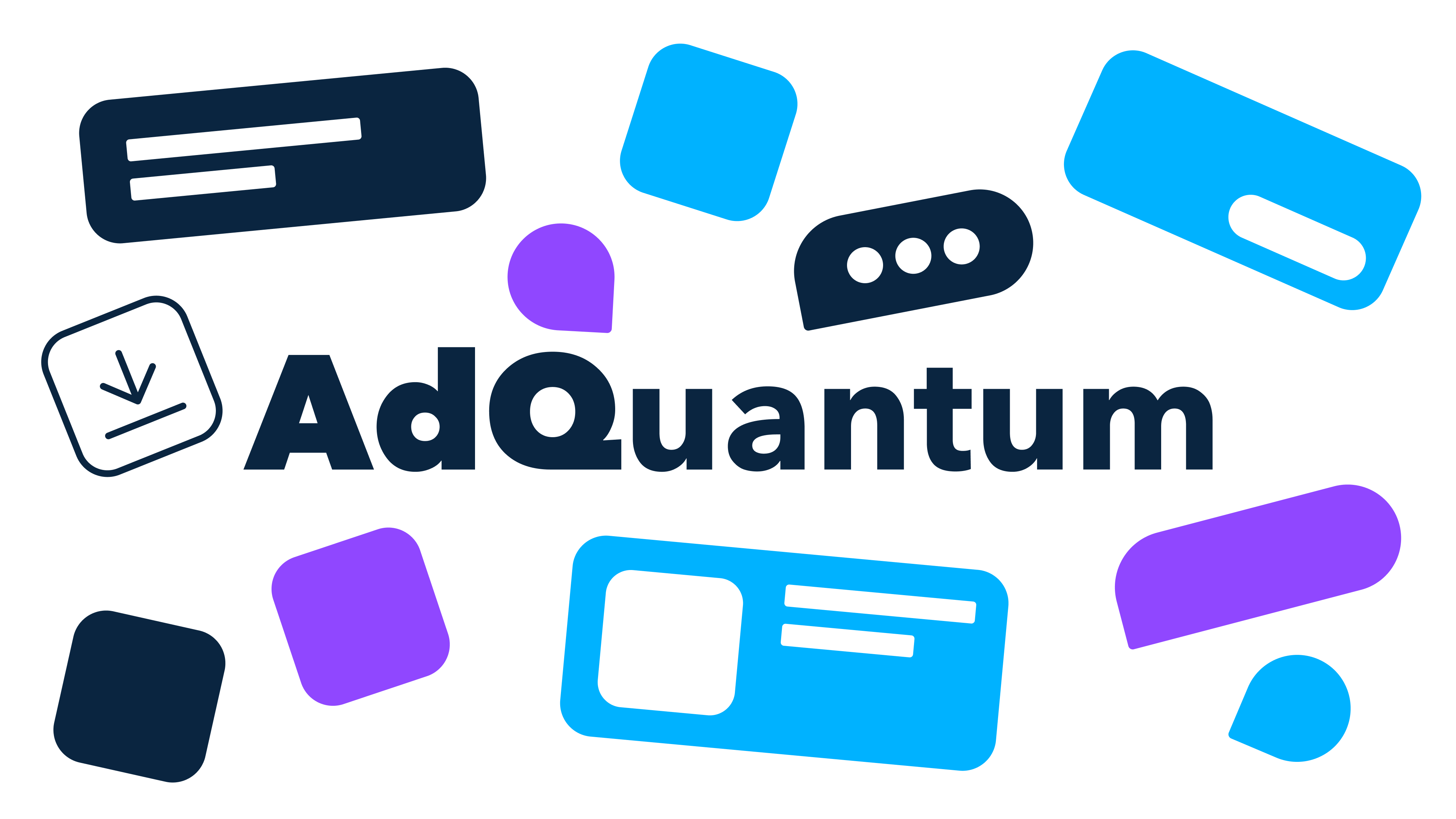
More brands are focusing solely on mobile. For Anton, mobile offers “unique engagement and growth opportunities that web funnels simply can’t replicate.”
The biggest recent change is rising competition and higher ad costs due to privacy and platform restrictions. Anton’s advice is this: “Marketers must invest more in creative innovation and automation. And invest wisely. Creatives that resonate and automation that scales are key to competing in today’s market.”
To succeed, he recommends:
- Larger budgets to gather meaningful data and outpace rivals
- Innovative creatives that connect and stand out
- Smart automation to streamline campaigns and focus on strategy
The future of mobile app marketing is collaborative
In a mobile marketing environment, teams get results when they combine creativity with technology and strategy. At AdQuantum, collaboration guides every step. Data supports human insight to shape and improve each campaign.
Brands are generating and testing fresh AI-driven creatives at scale to keep up with ever-shifting user tastes. AI-powered automation now optimizes creative testing alongside bidding and targeting, while “hybrid roles”—media buyers who bring analytical skills to their close collaboration with creative teams—are co-developing standout ads.
Marketers are also finding new ways to integrate mobile experiences with real-life moments, whether it’s fitness tracking, in-person shopping, or immersive gaming, where spending continues to boom.
Anton shared his advice on recent trends in mobile app marketing:
“Start with a solid, quality product. Invest enough to properly test your creatives. And stay flexible—be ready to pivot as platforms change and trends emerge. The future belongs to teams that merge creative thinking with data science and technology fluency. Marketing roles are evolving. Media buyers are co-creating and using AI tools—but human insight and product quality remain irreplaceable.”
The mindset for success in 2025 and beyond
Mobile app marketing campaigns thrive on authentic, agile creativity. Marketers who adapt to shifting privacy rules and platform policies, prioritize authentic creative testing, and embrace hybrid automation will thrive in this evolving environment. Success requires a mindset built on:
- Flexibility, to pivot quickly as platforms and user behaviors change
- Curiosity, to constantly test new ideas and learn from data
- Cross-team collaboration, linking creative, data, and acquisition experts
- Balanced use of AI and human judgment, to combine efficiency with insight
- And above all, a relentless focus on product quality that meets real user needs
Platforms like Bïrch are quickly becoming essential for mobile app marketers in 2025 and beyond. Automation frees up valuable time by taking care of the technical heavy lifting—think rules-based optimization, campaign duplication, and cleaning up data discrepancies.
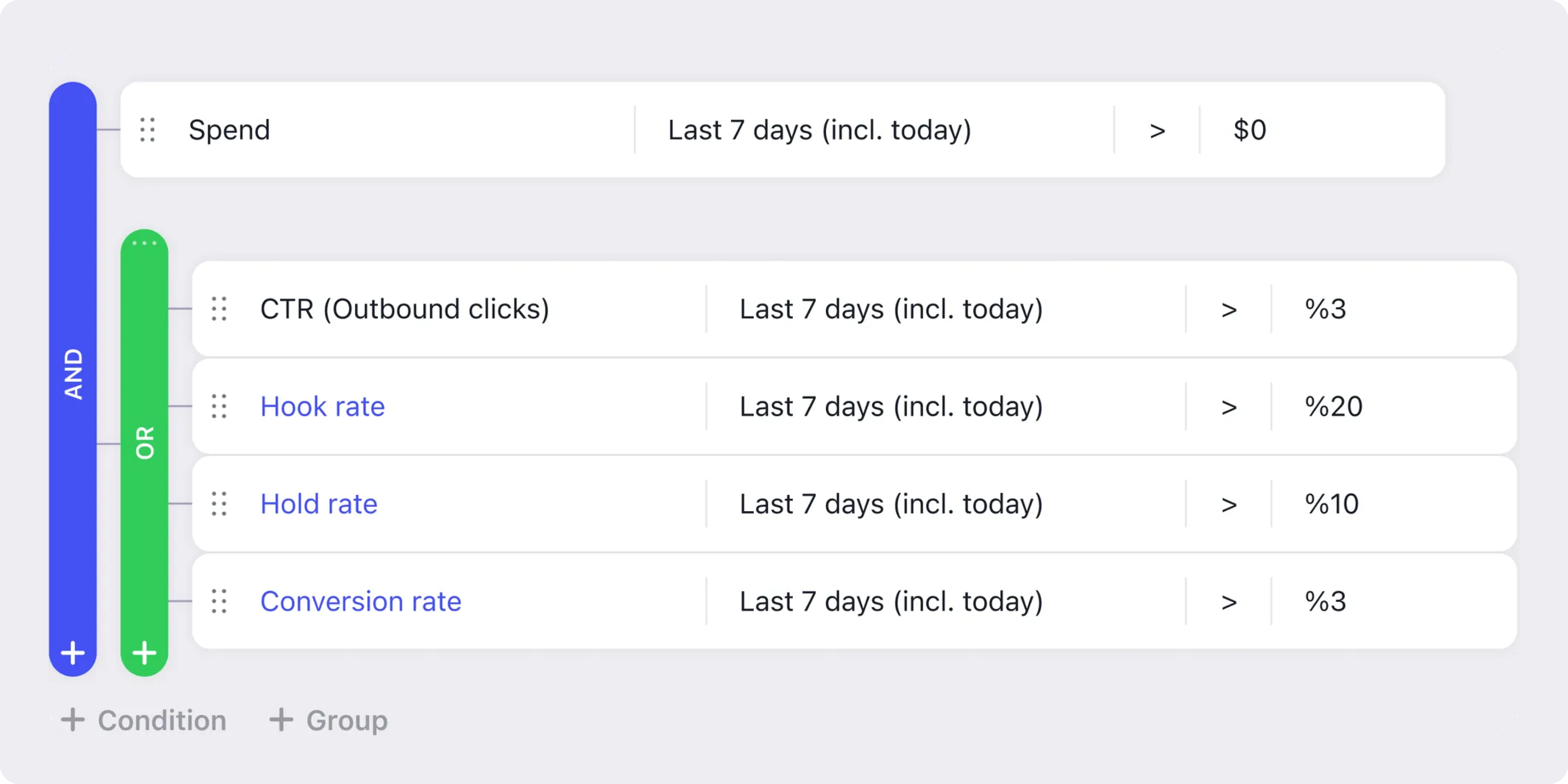
That means you can focus on what really matters: coming up with creative ideas and building agile strategies that actually shift the metrics.
Discover the sweet spot between smart automation and hands-on decision-making with Bïrch. Like AdQuantum, it could be just what you need to supercharge your mobile app marketing results.
FAQs
What happened to Revealbot?
Revealbot has a new look and a new name—we’re now Bïrch! The change highlights our focus on bringing together the best of automation and creative teamwork.
Mobile app marketing has changed fast. If you’ve been in the space for a few years, you’ve probably felt it: Apple’s App Tracking Transparency (ATT) has shaken up attribution, creatives have become crowded and struggle to stand out, and AI has sped up how we manage campaigns. Today, it’s less about hyper-targeting and more about nailing your creative and product–market fit.

We spoke with Anton Kuzmin, Head of User Acquisition at AdQuantum, a performance-driven marketing agency, to uncover what’s working now and where mobile app marketing is headed. The team has been scaling subscription apps, mobile games, and AI-powered tools across global markets for a decade. They shared deep mobile app marketing insights on campaign strategies, creative testing frameworks, and user acquisition shifts shaping the space.
Key takeaways
- Due to platform automation and privacy rules, mobile app marketing prioritizes creative quality over micro-targeting.
- Lifecycle-based strategies (launch, growth, maturity) are essential for sustainable results.
- Creative testing is the #1 growth lever—emotional, story-driven formats often outperform polished brand ads.
- Attribution remains complex; agencies blend SKAdNetwork data, modeled insights, and in-app metrics to evaluate success.
- AI enhances efficiency but doesn’t replace human creativity. The best results come from merging tech and storytelling for impact.
Mobile vs web marketing: Is one better than the other?

AdQuantum’s roots run deep in mobile marketing. Anton recalls how the agency first built its reputation working with subscription and gaming apps—sectors shaped by unique user behaviors and platform-specific challenges.
Today, AdQuantum combines mobile and web strategies fluidly. They often leverage hybrid approaches, like web-to-app and web-to-web funnels, to maximize acquisition and user lifetime value. Their portfolio spans subscription-based fitness and lifestyle apps, fintech apps, AI-powered tools, and a variety of mobile games, demonstrating adaptability across platforms.
In AdQuantum’s experience, this is what sets mobile and web marketing apart:
- User behavior: Mobile users expect their journey to be fast and smooth. They want to hop between apps and screens in moments.
- Attribution complexity: Unlike web, mobile attribution is a puzzle. Privacy rules and “walled gardens” make accurate measurement tricky.
- Growth opportunities: Mobile apps benefit from app stores, push notifications, and native device features that are unavailable on the web.
Mobile marketing isn’t just web marketing on a smaller screen. It has a unique ecosystem and user behavior. Anton tells brands trying to decide between the two: “Mobile offers a broader reach and deeper engagement potential, but unlocking that requires specialized skills and approaches.”
Building a winning app marketing strategy: aligning strategy with the app lifecycle
Campaigns at AdQuantum come alive through tight collaboration. Performance buyers, creative leads, AI managers, and project managers engage in continuous feedback loops driven by real-time data.
AdQuantum’s campaign process unfolds in ideation, prototyping, and testing. Anton explains, “Success rarely hinges on one viral ad. It’s a structured, repeatable process that discovers—and scales—what works best.” Let’s take a look at how they do it.

However, what truly sets AdQuantum apart is how closely they align their strategies to each app’s lifecycle stage. This targeted approach drives efficiency and sustained growth. Here’s how they break it down:
1. Early stage: ideation & creative development
The focus is on validating the product–market fit. AdQuantum runs baseline CPI tests with broad targeting to confirm the app resonates with users. Quick creative iterations help pinpoint which messages connect best.
Who’s involved?
- Creative leads, campaign strategists, creative managers, and AI managers collaborate to generate fresh ad concepts.
What do they do?
- They analyze industry trends, competitor moves, and user insights to brainstorm hypotheses.
Tools:
- “Spy tools” like Ad Library help the team monitor competitor creatives.
- Tools like Midjourney come into play when they need a more tailored or unique creative approach.
- Perplexity and ChatGPT streamline idea generation for research and brainstorming.
2. Growth phase: prototyping & production
The priority now shifts to scaling and retention. This means increasing creative volume, leveraging automated bidding, and optimizing onboarding flows to keep users engaged beyond installation.
Who’s involved?
- Creative teams (including motion designers and art directors) work closely with AI specialists to produce video and static ad assets efficiently.
What do they do?
- Brainstorm ad concepts using trend research and past results, rapidly prototyping and refining ideas with help from AI specialists.
- Produce video, motion, and static formats for each channel and iterate quickly based on feedback.
- Launch the best assets for live testing, keeping the creative pipeline fresh to maximize results.
Tools:
- Symphony, CapCut, and other custom solutions for generating ad creatives, especially for platforms like TikTok.
3. Maturity: testing & optimization
Profitability and lifetime value (LTV) are key here. The team fine-tunes audience segmentation and remarketing efforts and nurtures long-term user cohorts to maximize ROI.
Who’s involved?
- Performance buyers, media buyers, data analysts, and campaign managers lead this phase.
What do they do?
- Launch multiple ad variants, conduct A/B tests to evaluate performance, identify winning creatives rapidly, and monitor essential KPIs like installs per mille (IPM), cost per install (CPI), retention, and lifetime value (LTV).
Tools:
- Mobile measurement partners (MMPs) such as Adjust and Appsflyer track attribution and user events.
- Bïrch to handle campaign scaling, bidding strategies, and creative rotations.
Anton tells us that, in practical campaign execution, the team adopts broad targeting and automated bidding to let algorithms optimize delivery. “Manual settings are fading away,” he says. “Platforms encourage the use of ‘advantage placements’ or other automated modes. Creative variety, volume, and quality remain the key levers on the buying side.”

Anton recounted a notable example of building a campaign from the ground up for a Health & Fitness client:
"We developed a user acquisition strategy from scratch for a web-to-web campaign. The biggest challenge was finding the proper audience and refining the funnel. We relied heavily on extensive A/B testing and used quizzes to engage users. Through patience and continuous testing, we managed to cut the CPA in half within two months, turning the campaign into a predictable, profitable machine."
This case reinforces AdQuantum’s emphasis on process over quick wins. Meticulous testing and funnel optimization can unlock growth even when starting without prior data.
By blending automation with high creative output, they avoid a one-size-fits-all tactic. Every lifecycle stage calls for unique KPIs and creative strategies, keeping campaigns agile, scalable, and performance-driven from launch to maturity.
Learning from early-stage app mistakes
Launching a new mobile app excites teams, but—as Anton points out—many fall into familiar traps that stall growth and drain resources. But early missteps don’t need to happen. Teams can follow a smarter, more effective path.
One of the biggest challenges early-stage apps face is underfunded budgets. Anton explains that testing with less than $10,000 rarely uncovers the comprehensive insights needed to understand how an app fits the market and channels.
He recommends starting with at least $40,000 to $50,000 to test 20 plus creative assets meaningfully. Investing this much allows teams to gather reliable data on what resonates instead of jumping to conclusions from incomplete or inconclusive results.
Another common pitfall involves rushing into paid user acquisition without validating product–market fit. Investing heavily in acquisition before ensuring the app truly meets users’ needs only leads to high churn and wasted spend. Anton urges teams to perfect the app first—making sure it solves a real problem and delivers genuine value—before scaling marketing efforts. “Marketing alone can’t save a subpar product,” he emphasizes.
On the creative front, AdQuantum shares eye-opening insights. Anton reveals that breakthrough creatives win in less than 1% of cases. This forces marketers to produce thousands of creative variations to find those rare pieces that truly move the needle.
He stresses the value of relentless iteration and volume:
Resisting iteration or clinging to early concepts also proves costly. Teams can optimize results when they let data drive decisions and remain flexible. As Anton puts it, holding onto failing ideas only wastes budget and slows growth.
Creative testing: What’s winning right now?

Creative remains the biggest growth lever in mobile app marketing—and the most unpredictable. Teams that excel at ideating, testing, and scaling high-performing ads consistently outpace their competition—but not without embracing constant challenges, experimentation, and a healthy dose of humility.
How AdQuantum ideates, tests, and scales winning creatives
User expectations and platform algorithms shift constantly, creative fatigue sets in quickly, and what resonated last quarter can flop in the next. “Sometimes, even exhaustive rounds of testing yield nothing for months—then, suddenly, with enough volume and a bit of luck, you find your winner,” Anton says.
AdQuantum approaches creatives as process-driven experiments:
- Intensive product understanding: The team digs deep into the app, its core value, and real user motivations before generating creative ideas.
- Collaborative brainstorming: Creative and buying teams collectively brainstorm 10–20 hypotheses for each new campaign.
- Trend monitoring: They constantly track successful creatives from other verticals using spy tools (like Ad Library), remixing formats and hooks from fintech, fitness, gaming, and beyond.
- Rapid prototyping and launch: Ideas are quickly rendered into multiple formats, from video to static and interactive, then released to gather real-world data.
- Continuous testing: They produce and test dozens—even hundreds—of creative variations at a time, only scaling those that deliver above-benchmark results.
“The feedback loop is everything. We monitor early signals closely, iterate quickly, and aren’t afraid to kill underperformers fast. It’s all about maximizing learning velocity.”
Balancing performance with authenticity
The most successful ads walk a fine line between performance and authenticity. On one hand, creatives need to drive immediate installs and engagement. On the other hand, modern users tune out anything that feels “salesy” or inauthentic.
“Our team finds that storytelling, using real user language, and leaning into emotional truths deliver better results than generic performance slogans,” says Anton. “The first three seconds are everything. If you don’t spark an emotional response right away—surprise, amusement, recognition—users scroll past.”
Sometimes, the most significant breakthroughs come unexpectedly.
Platform choices: Anton’s perspective
Anton knows the key to choosing ad platforms is matching the right audience with the right creative. He leans on the data but also makes sure ads feel at home on each platform. TikTok is perfect for quick, creative experiments and fast reach, while YouTube shines when you want to tell a longer story or retarget viewers.
The team starts by figuring out where people hang out and how they use each app. Then, they let the numbers show which ads hit or miss. Authentic, native-feeling content excels on TikTok, but polished videos still have their moment when it comes to building trust.
There’s no silver bullet. Anton’s team runs tests everywhere, watches the results, and pours more budget into what’s working. User-generated content may be all the rage now, but don’t forget the power of quality creatives for the long haul.
Bottom line: every platform has its superpowers. The fun is in testing, tweaking, and jumping on winners fast. However, spotting those winners—and scaling them effectively—gets trickier when tracking signals aren’t clear enough.
How to navigate the murky waters of attribution and automation
Attribution has changed dramatically in mobile app marketing, primarily due to privacy regulations and platform restrictions. AdQuantum combines automated tools with manual oversight to manage these challenges effectively.
Anton explains: “We scale horizontally, running hundreds of campaigns daily across many ad accounts. Manual management isn’t feasible at this scale. Bïrch helps us control campaigns overnight and optimize efficiently.”
AdQuantum relies on platforms like Bïrch to handle volume and complexity:
“You can’t automate your way out of creative or strategic gaps. Human insight, being honest with the audience, and product quality are still critical.”
To overcome fragmented tracking, the team blends automated campaign optimization with Bïrch, manual data analysis, strategic adjustments, and ongoing calibration.
What’s next for mobile growth: Strategic advice from AdQuantum

More brands are focusing solely on mobile. For Anton, mobile offers “unique engagement and growth opportunities that web funnels simply can’t replicate.”
The biggest recent change is rising competition and higher ad costs due to privacy and platform restrictions. Anton’s advice is this: “Marketers must invest more in creative innovation and automation. And invest wisely. Creatives that resonate and automation that scales are key to competing in today’s market.”
To succeed, he recommends:
- Larger budgets to gather meaningful data and outpace rivals
- Innovative creatives that connect and stand out
- Smart automation to streamline campaigns and focus on strategy
The future of mobile app marketing is collaborative
In a mobile marketing environment, teams get results when they combine creativity with technology and strategy. At AdQuantum, collaboration guides every step. Data supports human insight to shape and improve each campaign.
Brands are generating and testing fresh AI-driven creatives at scale to keep up with ever-shifting user tastes. AI-powered automation now optimizes creative testing alongside bidding and targeting, while “hybrid roles”—media buyers who bring analytical skills to their close collaboration with creative teams—are co-developing standout ads.
Marketers are also finding new ways to integrate mobile experiences with real-life moments, whether it’s fitness tracking, in-person shopping, or immersive gaming, where spending continues to boom.
Anton shared his advice on recent trends in mobile app marketing:
“Start with a solid, quality product. Invest enough to properly test your creatives. And stay flexible—be ready to pivot as platforms change and trends emerge. The future belongs to teams that merge creative thinking with data science and technology fluency. Marketing roles are evolving. Media buyers are co-creating and using AI tools—but human insight and product quality remain irreplaceable.”
The mindset for success in 2025 and beyond
Mobile app marketing campaigns thrive on authentic, agile creativity. Marketers who adapt to shifting privacy rules and platform policies, prioritize authentic creative testing, and embrace hybrid automation will thrive in this evolving environment. Success requires a mindset built on:
- Flexibility, to pivot quickly as platforms and user behaviors change
- Curiosity, to constantly test new ideas and learn from data
- Cross-team collaboration, linking creative, data, and acquisition experts
- Balanced use of AI and human judgment, to combine efficiency with insight
- And above all, a relentless focus on product quality that meets real user needs
Platforms like Bïrch are quickly becoming essential for mobile app marketers in 2025 and beyond. Automation frees up valuable time by taking care of the technical heavy lifting—think rules-based optimization, campaign duplication, and cleaning up data discrepancies.

That means you can focus on what really matters: coming up with creative ideas and building agile strategies that actually shift the metrics.
Discover the sweet spot between smart automation and hands-on decision-making with Bïrch. Like AdQuantum, it could be just what you need to supercharge your mobile app marketing results.
FAQs
What happened to Revealbot?
Revealbot has a new look and a new name—we’re now Bïrch! The change highlights our focus on bringing together the best of automation and creative teamwork.












